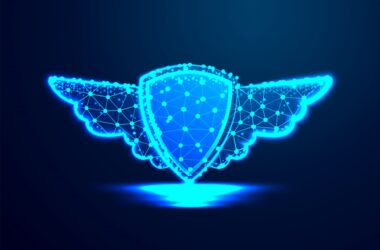Logistics might not be your first thought when it comes to technology’s cutting edge, yet artificial intelligence (AI) is already transforming supply chains, with IoT not far behind.
To learn more we spoke with Paul Richardson, chief innovation officer at DHL Supply Chain and Internet of Things World Europe keynote speaker, who filled us in on how the internet of things and its associated tech is now being used by DHL, its partners and its competitors, along with what they’ve got planned.
Tell us a bit more about yourself and your company.
Richardson: DHL Supply Chain is the leading global logistics company. We operate all the elements of a supply chain at a scale that is unmatched, which allows us to create highly integrated solutions that allow our clients to optimise their logistics.
I am the Chief Innovation Officer in the UK and Ireland Supply Chain division, and have responsibility for identifying new ways to add value to our clients and to the DHL business. This involves engaging with external partners, as part of our open-innovation approach, and developing new businesses with innovative business models.
I also have a responsibility for four sectors, Passenger Gateway, Technology, Public Sector and Envirosolutions, which provides direct access to clients and accelerates the delivery of change.
Would you say there’s been a surprising lack of industrial IoT case studies to date?
Richardson: There is certainly a high level of activity relating to internet of things, both in DHL itself and with our clients. However, there are a few factors which have resulted in the relative lack of industrial case studies.
Firstly, we are now approaching the tail end of Gartner’s Hype Cycle when it comes to IoT. That is, we are at a point where the news stories and hype around IoT is starting to reduce, and the delivery of IoT projects is beginning to increase.
Secondly, the nature of IoT is that many projects are bottom-up and tackle specific solutions. In contrast to more top-down trends, such as enterprise resource planning (ERP) from a few years ago, examples of IoT are more granular.
Finally, as some of the IoT projects that we are working on deliver significant competitive advantage to our clients, we need to keep confidentiality on the new ways of working.
Given the number of projects that I know are taking place, I suspect that you’ll see an increasing number of case studies coming out in 2017 and 2018 – in particular, we’ll see more IoT case studies that link to machine learning.
Who do you anticipate will lead the way when this happens, and will DHL play a significant role?
Richardson: There are a number of different providers currently contributing to the “IoT solution stack”. These providers service different aspects of a business bringing IoT solutions to areas such as sensors, communications, device management, data aggregation, security and analysis. Such solutions need to be tailored and adapted for the requirements of different sectors, such as retail, automotive or FMCG, rather than being “one size fits all”.
We expect that the leaders in IoT will be those providers who can uncover the real business opportunities, understand the challenges of working in each sector, and who have the rigour of delivering technology enabled solutions. Given that DHL is exactly one of these organizations, you could argue that I’m subjective on this topic! We are, however, delivering a broad range of initiatives right now and I see that trend continuing.
How will DHL apply IoT technology in the supply chains?
Richardson: IoT in supply chains opens a realm of opportunities. At its most simple, it’s about understanding where inventory is in the supply chain, particularly when it’s not in a warehouse, and what state that inventory is in, for example temperatures.
From there, and with the use of machine learning and analytics, companies are able to do more granular planning, procurement and production, and are able to consider how to deliver more segmented supply chain solutions. Beyond this, the ability to tag and track an item allows for more mechanisation to take place in the supply chain, providing lower costs to serve and extending potential service levels.
Within 10 years, we’ll see a significant proportion of the inventory in the supply chain with sensors collecting data. The winners in the space will be those that can aggregate, extend and then analyse the data to adapt the supply chains in real time.
Does artificial intelligence significantly in DHL’s future plans?
Richardson: AI will have a significant influence on the supply chain, and is already very much part of what we do. While there hasn’t been a huge amount of hype surrounding AI in supply chains, there are clear examples when you break it down into its key component parts. These include predictive analytics, scheduling and resource planning, operational efficiency, customer insight and automation and robotics.
AI is, in essence, the combination of data collected through IoT sensors combined with machine learning. This is set to drive the most significant changes, which will fundamentally reduce costs and improve services for end customers.
Is anyone guilty of holding back the technological development of supply chains?




